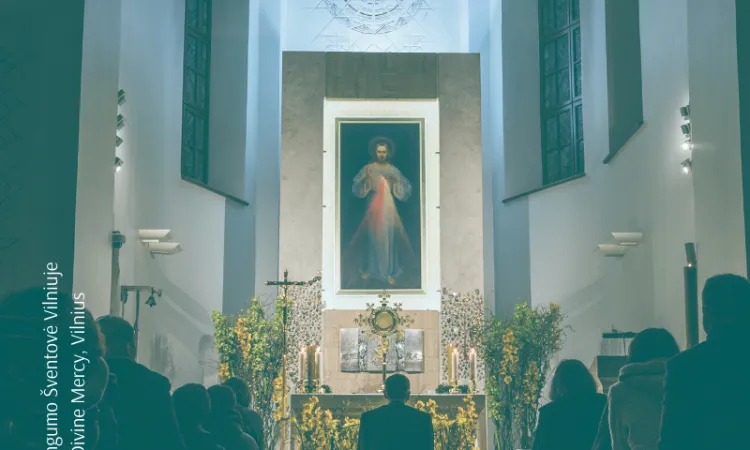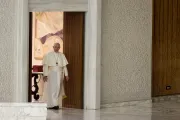Kazimierowski finished the painting in 1935.
The first exposition took place at the Gate of Dawn, whose chapel had been dedicated to Mary, Mother of Mercy, 400 years earlier. For three days, on Apr. 26, 27, and 28, the painting was hung on display in the chapel, and people venerated it. It was a crucial moment: the beginning of the Divine Mercy devotion as we know it today.
More importantly, it took place on the first Sunday after Easter, the very same liturgical moment of the year that St. John Paul II officially set as Divine Mercy Sunday.
In his memoirs, Fr. Sopocko shared a recollection: "During the Holy Week of 1935 Sr. Faustina said to me that the Lord Jesus demanded that I place the picture in the Gate of Dawn for three days where the triduum at the end of the jubilee of Redemption was to be held."
More in A Vatican Observer
"The triduum," Fr. Sopocko continued, "was planned on the same days as the coveted feast of Mercy. Soon I learnt that the said triduum was going to be held indeed and the parish priest of the Gate of Dawn asked me to say the sermon. I agreed, on condition that the picture would be placed as a decoration in the window of the cloister where the picture looked impressive and attracted more attention than the picture of Our Lady."
In her Diary, Sr. Faustina wrote: "On Friday, when I was at the Gate of Dawn to attend the ceremony during which the image was displayed, I heard a sermon given by my confessor Father Sopocko. This sermon about divine Mercy was the first of the things that Jesus had asked for so very long ago. When he began to speak about the great mercy of the Lord, the image came alive, and the rays pierced the hearts of the people gathered there. Great joy filled my soul to see the grace of God."
Things quickly became more difficult.
In 1936, Sr. Faustina had to return to Poland. At first, she went to Walendow, south-east of Warsaw. After she was diagnosed with tuberculosis, she was sent to the sanatorium in Pradnik. Krakow. She died in 1938.
The image of the Divine Mercy stayed in Lithuania, hidden in the church of St. Michael, where Fr. Sopocko was pastor.
The outbreak of the Second World War battered Lithuania. In 1939, Soviet troops invaded the Baltic state and began the process of imposing official Atheism: shutdown of seminaries, the prohibition of teaching religion, seizing of ecclesiastical goods, and the abolition of the State – Church agreement all came in fairly short order.
Nazi Germany occupied Lithuania in 1941, and in 1944 the Soviet Union occupied the country again. After the war, Lithuania remained a Soviet satellite. In 1948, the communist authorities decided to turn the church of St. Michael into an architectural museum.
(Column continues below)
Subscribe to our daily newsletter
The church was closed then, and all the decorations and furnishings of the church sold, except the image of the Divine Mercy.
The painting remained hanging for three years on a wall of the former church of St. Michael, until two women in 1951 decided the picture was not safe, and carried it away.
They bribed the custodian with a little money and a bottle of vodka, and carried the painting off, leaving the frame. They took only the canvas, wrapped with care, and they hid it in an old cellar at a friend's house.
The women were eventually deported to Siberia, while the canvas, after some years – it's not clear exactly how many - was brought to the church of the Holy Spirit in Vilnius. When the women were given amnesty and allowed to return from their Siberian exile, they went back to Vilnius to recover the image.
Archbishop Tadeusz Kondrusiewicz of Minsk has been among those who worked to bring back the painting to Vilnius.
Speaking with Catholic News Agency, he recounts:, "In 1956, after five years of imprisonment, Fr. Jozef Grasewicz began searching for the image. He was a great worshiper of the Divine Mercy and a friend of Fr. Sopocko. One day, he visited his friend Fr. Jan Ellert in the church of the Holy Spirit. There, he saw the image, and he asked Fr. Ellert to give it to his parish of St. George in Nowa Ruda, Belarus. Fr. Ellert agreed. The image was then transferred to Nowa Ruda, hanged very high."



